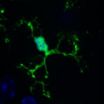(Press-News.org) In 2007, nearly two million children in the United States had at least one parent serving in the military. Military families and children, in particular, suffer from mental health problems related to long deployments.
A new study from researchers at the University of Washington (UW) concludes that parental military deployment is associated with impaired well-being among adolescents, especially adolescent boys. The study, "Adolescent well-being in Washington state military families," was published online in the American Journal of Public Health.
Lead author Sarah C. Reed, who has a master's degree from the UW School of Public Health, said the findings show that it is time to focus more on the children that are left behind in times of war. "There is a lot of research about veterans and active-duty soldiers, and how they cope or struggle when they return from a deployment," said Reed. "Those studies hit the tip of the iceberg of how families are coping and how their children are doing."
Adolescents are uniquely vulnerable to adverse health effects from parental military deployment. Healthy development, including identifying a sense of self and separation from family, can be interrupted during parents' active military service.
Media exposure and the developmental ability to understand the consequences of war may further disrupt adolescents' adjustment and coping. Teens may also have additional responsibilities at home after a parent's deployment, researchers said.
UW researchers used data from the Washington state 2008 Healthy Youth Survey, administered to more than 10,000 adolescents in 8th, 10th- and 12th grade classrooms. Female 8th graders with parents deployed to combat appear to be at risk of depression and thoughts of suicide, while male counterparts in all grades are at increased risk of impaired well-being in all of the areas examined (low quality of life, binge drinking, drug use and low academic achievement).
National research organizations, including RAND Health and the RAND National Security Research Division, have studied what's known as the "invisible wounds" of war. But Reed and her team said existing research is not enough. "We have to figure out more of what's going on within families and with children, and what's going to be helpful to mitigate the difficult things—including risky behaviors by adolescents—that are happening in families," she said.
Reed said that implementing or strengthening school-based programs that target affected adolescents would be a good starting point. Research and support programs also need to be beefed up, based on the research team's analysis. "There seem to be a lot of programs available but they are scattered and hard to navigate," said Reed. "In Washington state, schools have support programs, but they appear to be disconnected. There's a lot of energy in terms of people who would like to help, but a more cohesive effort in reaching out to adolescents and providing services is important."
Reed and her team are working on a follow-up study, analyzing parental military service and adolescent behaviors of school-based physical fighting, weapon carrying and gang membership.
###
Funding for the study was supported by a grant from the Maternal and Child Health Bureau, Health Resources and Services Administration, U.S. Department of Health & Human Services. Co-authors on the study include Janice Bell, UW assistant professor of health services, and Todd Edwards, UW research assistant professor of health services, both in the UW School of Public Health.
Adolescent boys among those most affected by Washington state parental military deployment
2011-07-22
ELSE PRESS RELEASES FROM THIS DATE:
4 unusual views of the Andromeda Galaxy
2011-07-22
These four observations made by Hubble's Advanced Camera for Surveys give a close up view of the Andromeda Galaxy, also known as Messier 31 (M 31). Observations of most galaxies do not show the individual stars — even the most powerful telescopes cannot normally resolve the cloudy white shapes into their hundreds of millions of constituent stars.
In the case of the Andromeda Galaxy, however, astronomers have a few tricks up their sleeves. Firstly, images from Hubble Space Telescope have unparalleled image quality as a result of the telescope's position above the atmosphere. ...
Workings of brain protein suggest therapies for inherited intellectual disability, autism
2011-07-22
Researchers now have a much clearer understanding of how mutations in a single gene can produce the complex cognitive deficits characteristic of Fragile X Syndrome, the most common inherited form of intellectual disability. As the majority of patients with Fragile X Syndrome also display autism-like symptoms, the findings offer hope for treating both conditions.
A report in the July 22nd issue of the journal Cell, published by Cell Press, defines a set of messenger RNA (mRNA) molecules that the Fragile-X mental retardation protein (FMRP) binds in the brains of mice. ...
Targeting toxin trafficking
2011-07-22
Toxins produced by plants and bacteria pose a significant threat to humans, as emphasized by the recent effects of cucumber-borne Shiga toxin in Germany. Now, new research published on July 21st by the Cell Press journal Developmental Cell provides a clearer view of the combination of similar and divergent strategies that different toxins use to invade a human host cell.
Ricin is a highly toxic protein derived from the castor bean plant that has raised concerns as a potentially lethal biological weapon. Pseudomonas Exotoxin A (PE) is a sometimes deadly protein produced ...
Breastfeeding may prevent asthma
2011-07-22
Feeding a baby on only breast milk and for up to 6 months after birth can reduce their risk of developing asthma-related symptoms in early childhood, according to new research.
The study, which is published online today (21 July 2011) in the European Respiratory Journal, looked at the impact of the duration of breastfeeding and the introduction of alternative liquids or solids in addition to breast milk.
The researchers, from the Generation R Study, Erasmus Medical Center in The Netherlands, used questionnaires to gather data from over 5,000 children. They ascertained ...
Proteins enable essential enzyme to maintain its grip on DNA
2011-07-22
COLUMBUS, Ohio – Scientists have identified a family of proteins that close a critical gap in an enzyme that is essential to all life, allowing the enzyme to maintain its grip on DNA and start the activation of genes.
The enzyme, called RNA polymerase, is responsible for setting gene expression in motion in all cells. RNA polymerase wraps itself around the double helix of DNA, using one strand to match nucleotides and make a copy of genetic material.
RNA polymerase cannot fall off of the DNA or stop this process once it starts. If it does, no proteins will be made, ...
UNC researchers identify seventh and eighth bases of DNA
2011-07-22
(Embargoed) CHAPEL HILL – For decades, scientists have known that DNA consists of four basic units -- adenine, guanine, thymine and cytosine. Those four bases have been taught in science textbooks and have formed the basis of the growing knowledge regarding how genes code for life. Yet in recent history, scientists have expanded that list from four to six.
Now, with a finding published online in the July 21, 2011, issue of the journal Science, researchers from the UNC School of Medicine have discovered the seventh and eighth bases of DNA.
These last two bases – called ...
Working mothers and the effects on children
2011-07-22
Parents struggling to combine paid work with bringing up their children now have some positive news thanks to a new study funded by the Economic and Social Research Council (ESRC) on maternal employment and child socio-emotional behaviour in the UK. The research shows that there are no significant detrimental effects on a child's social or emotional development if their mothers work during their early years.
The ideal scenario for children, both boys and girls, was shown to be where both parents lived in the home and both were in paid employment. For children living with ...
Gardening in the brain
2011-07-22
Gardeners know that some trees require regular pruning: some of their branches have to be cut so that others can grow stronger. The same is true of the developing brain: cells called microglia prune the connections between neurons, shaping how the brain is wired, scientists at the European Molecular Biology Laboratory (EMBL) in Monterotondo, Italy, discovered. Published online today in Science, the findings could one day help understand neurodevelopmental disorders like autism.
"We're very excited, because our data shows microglia are critical to get the connectivity ...
Identical virus, host populations can prevail for centuries, WHOI researcher reports
2011-07-22
A Woods Hole Oceanographic Institution (WHOI) scientist, analyzing ancient plankton DNA signatures in sediments of the Black Sea, has found for the first time that the same genetic populations of a virus and its algal host can persist and coexist for centuries. The findings have implications for the ecological significance of viruses in shaping algae ecosystems in the ocean, and perhaps fresh water as well.
"The finding that the DNA of viruses and algal host cells can be preserved in the geological records is of great interest to microbial ecologists," said Marco Coolen ...
Plan to one day end the use of environmentally harmful chemicals on commercial crops developed
2011-07-22
(Edmonton) Two University of Alberta researchers have published a step by step plan to one-day end the use of environmentally harmful chemicals on commercial crops by developing plants that produce their own fertilizer.
U of A plant biologist Allen Good says the energy required to produce nitrogen fertilizers has pushed the world-wide cost for agricultural producers to a $100 billion a year. Good says that while they are necessary for high yields, those nitrogen fertilizers also damage the environment. Emissions from nitrogen fertilizers add to greenhouse gas emissions ...


